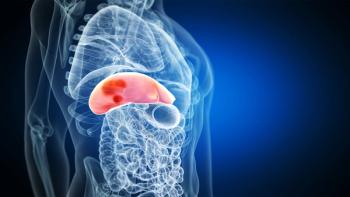
Opinion: Now Is the Time to Optimize Electronic Health Record Systems
Buying one for your practice or enhancing the one you have will help you cut costs and boost your financial stability.
Electronic health record (EHR) optimization is about to get more challenging, but there are ways for organizations to prepare. With a looming economic downturn, a labor shortage in professional services, and continued supply chain disruptions, it may feel daunting to overhaul, enhance, or implement an EHR system. Optimizing these systems is critical for creating operational efficiencies, reducing high administrative costs, and improving financial stability. Here are some ways to optimize your EHR system during a time of continued disruption.
Know Your EHR System
It is important to understand the functionality and benefits of the tools your organization has already implemented but may not yet be adopted by your department or other departments. It is also crucial to know how updates or available features of your current EHR or a new system could affect overall business goals and drive value. Knowing the capabilities of an EHR system may reduce the need for a third-party system, decrease overall application and training costs, and lessen complexities for staff members working in multiple systems.
Improve Workflows
An optimized EHR system can improve workflows, catalyze queues of denials or referral responses, and improve scheduling templates to open access. Improving workflows through EHR optimization also creates an opportunity to reduce open encounters and lag charge times by enhancing clinical documentation tools and templates.
With continued labor shortages of frontline workers and back-office staff, it is more important than ever to ensure that digital solutions are integrated and implemented to reduce administrative burdens and increase provider and patient satisfaction. EHR systems can be updated with dashboards that include analytics for key metrics such as denials or provider efficiency metrics. By taking advantage of automated workflows and activities and ensuring the system provides support to both the provider organization and providers themselves, you may lessen the impact of labor shortages.
Simplify Satisfaction
Right now, improving the patient experience is crucial across all provider organizations. Many patients are increasingly dissatisfied with their care and some may even choose to defer care altogether. Results of a recent Associated Press–NORC Center for Public Affairs Research poll showed that 8 in 10 Americans are at least moderately concerned about getting access to quality health care when they need it. Ease of access to telehealth and urgent care services and increased consumerization of health care continue to affect patient loyalty. An optimized EHR system can help enhance the patient's experience by simplifying the referral process.
Optimizing your EHR system also can boost the efficient use of the patient portal and empower patients or their caregivers to take the lead on managing care. A developed patient portal facilitates online appointment self-scheduling, allows patients to update their medical information, and offers the option to revise medications. Mature patient portals can simplify online check-in and arrival, online bill pay, and the patient’s ability to obtain their records and visit notes. An optimized EHR system and patient portal create real-time access to patient data for patients, their caregivers, and other providers in a way that was not possible before digital transformation. The ability for provider organizations and health care workers to share patient data more effectively may lead to better, more personalized treatment.
It Does Not Have to Be Expensive
If a complete overhaul of your organization’s EHR system is out of the question, you can still make measurable, meaningful changes. Building and reestablishing relationships with patients should be top of mind for all provider organizations, so a good starting point is to optimize the patient portal. Make the most of the reports, dashboards, and other functionalities that the current EHR system offers, and use the technology you have to its fullest potential. EHR systems have the tools to generate documentation and ordering efficiencies for a high revenue-generating specialty—or you can use these tools to take a struggling specialty and improve its documentation and reporting.
The adoption and optimization of EHR systems not only have the potential to create operational efficiencies and lead to better outcomes for provider organizations, but they also may improve patient care with faster, safer, and more cost-effective decision-making. By optimizing your EHR system now, your organization will be better equipped to address future challenges in health care, the workforce, and the economy.
Julie McGuire, MSN, RN, is a managing director at The BDO Center for Healthcare Excellence & Innovation. She has more than 25 years of experience in health care and 15 years of experience collaborating with operational and clinical partners on delivering and transforming technology to new and existing facilities and services. BDO USA delivers assurance, tax, and financial advisory services to clients throughout the US and around the globe and is a member of BDO International, the world’s fifth-largest accounting network.
References
- 8 ways to get the most out of your EHR system. BDO. August 2022. Accessed October 12, 2022.
https://bit.ly/3T0iG1W - Healthcare stability outlook report: 2022 and 2023. BDO. September 2022. Accessed October 12, 2022.
https://bit.ly/3g3dOur - Support for greater government role in health care for older adults. The Associated Press-NORC Center for Public Affairs Research. August 2022. Accessed October 12, 2022.
https://bit.ly/3yY5ent
Newsletter
Knowledge is power. Don’t miss the most recent breakthroughs in cancer care.
























































































